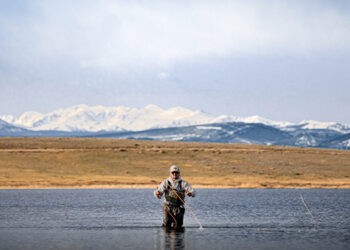Catering to all students through aquatic events.
Last year, a male student was shot during an assault in Florida State University’s library. He was left with mobility restraints, but as part of his rehabilitation, he wanted to learn how to scuba dive.
“The thing that I really appreciate about Florida State is that while we’re dealing with a large population of about 40,000 students, we also can take the time and energy to work with one student,” said Chris Morris, the director of campus recreation at Florida State University. That student is now a certified scuba diver.
In addition to working with individual students, the aquatics center at FSU hosts 20 to 30 programs a week at the Leach Aquatic Center and its 73-acre waterfront park conference center, which hosts programs like dive-in movies and yoga paddleboarding.
Marybeth Idoux, the assistant director of aquatics at the University of Arizona, empathizes with a busy aquatics schedule. In addition to offering swim lessons, broken up into three age groups, they also try to keep eight lanes available for open swim. Idoux said the shallow-end of the pool is typically open for basketball, hydro-training or any pick-up games. They also outsource the space to various organizations, both within and outside of the university. But the aquatic center keeps its students as the No. 1 priority.
“We make sure that we get the club sport and intramurals schedule and we book those lanes for them. So they’re our No. 1 priority, as well as our entire student body. That’s why we always have open rec available. Then, rentals and outside groups want to come in, so we will schedule that,” explained Idoux. Those outside groups include ROTC, the Jewish Community Center age group swim program and border patrol training.
 To not overbook the pool, the University of Arizona uses RecTrac, a web-based software that allows administrators of the account to schedule events. Once an event is scheduled, the entire faculty and staff can see it. “Staying organized will allow you to better serve your student population, or the population you’re dealing with,” said Idoux.
To not overbook the pool, the University of Arizona uses RecTrac, a web-based software that allows administrators of the account to schedule events. Once an event is scheduled, the entire faculty and staff can see it. “Staying organized will allow you to better serve your student population, or the population you’re dealing with,” said Idoux.
To help manage all aquatic activities, FSU relies on student directors. According to Jen McKee, the assistant director of campus recreation at FSU, the recreation center is the largest employer of students on campus. With approximately 700 students employed each semester, the university is able to certify students through the American Red Cross to ensure it has a lifeguard at its Leach Center pool, as well as the lakefront space.
“I think sometimes people are a little fearful about having aquatics, or a pool, inside their facility. And I think once you have the proper budget, the proper certifications and credentials, it’s really a plus for the university,” said Pattie Malarney, the senior associate director of campus recreation at FSU.
McKee even became an instructor trainer for the American Red Cross. As an instructor, she can certify students to become instructors, who can then certify their fellow students. “That has been something that’s really helpful. Because if it was just me, there would be no way we could have all those students be certified,” said McKee. “Plus it’s great for them. It’s a good opportunity for them to get instructor-certified while they’re in college.”
No matter how busy the pool may become, FSU continuously strives to engage as many students as possible. Morris explained that about 75 percent of the campus population participates in campus recreation programing, but they are always looking to increase that number.
“We’re always doing our best to serve them in the highest quality manner we can. We’re also very interested in that 25 percent of people who don’t participate,” explained Morris. “Trying to figure out why they don’t participate and trying to eliminate barriers and get them inside our doors. And we feel like aquatics can be a great way to do that.”










